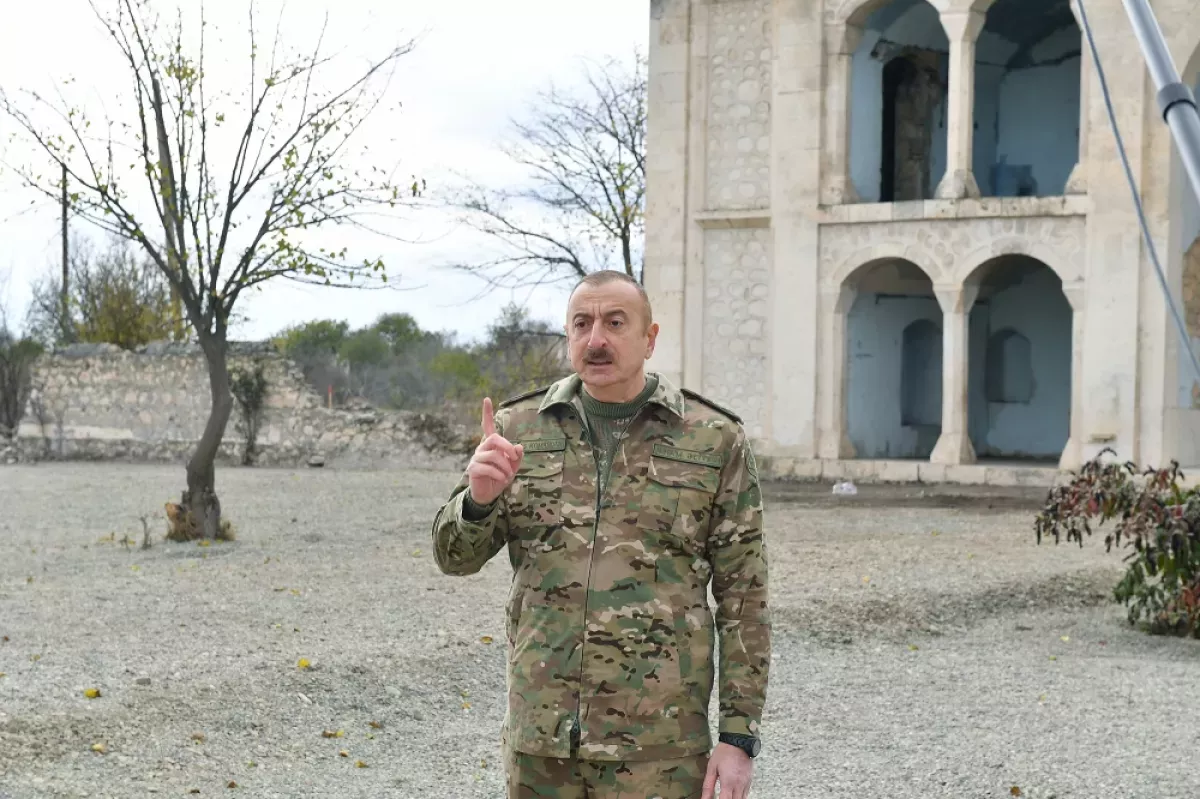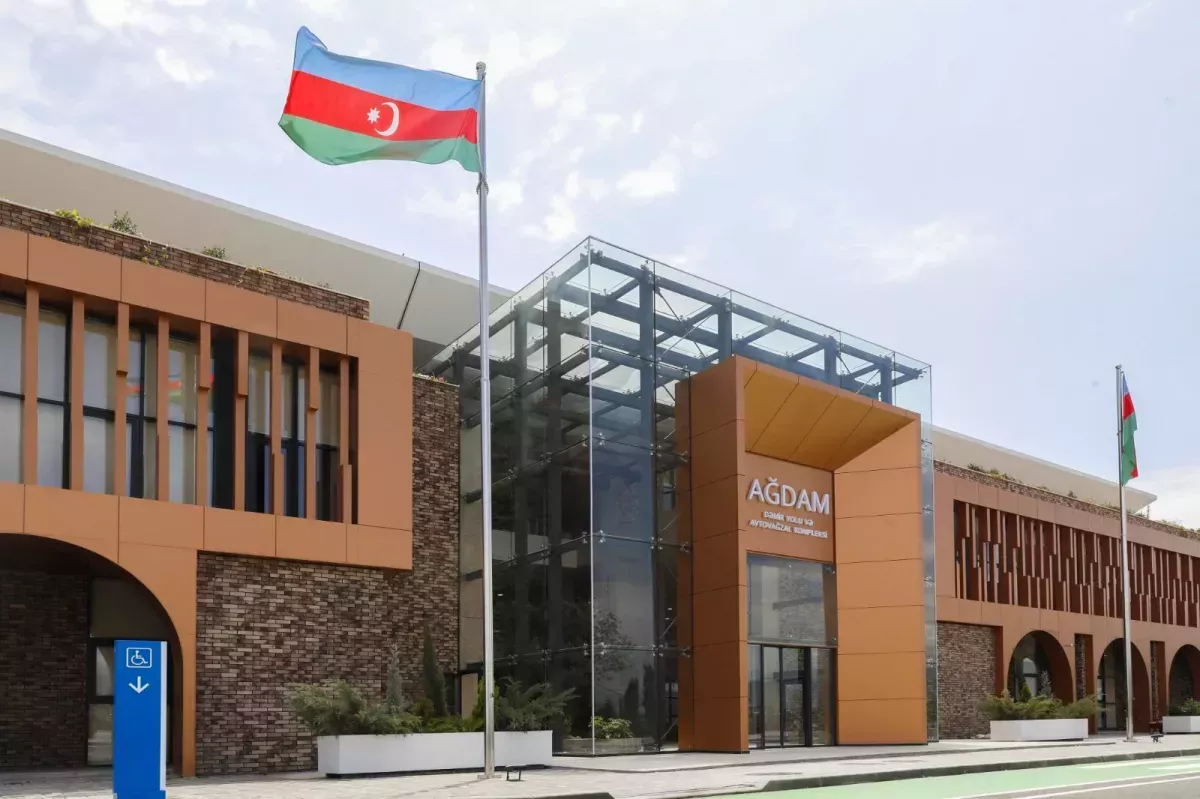From the “Hiroshima of the Caucasus” to a symbol of return Five years since the liberation of Aghdam
The autumn of 2020 entered Azerbaijan’s modern history as a period marked by events of profound national significance.
On September 27, following continuous Armenian provocations, the Azerbaijani Army launched the counter-offensive operation “Iron Fist”. This 44-day Patriotic War, aimed at liberating Azerbaijan’s ancestral lands, culminated in the signing of the Trilateral Statement by President Ilham Aliyev, President Vladimir Putin, and Prime Minister Nikol Pashinyan.
The main legal outcome of this document was the practical restoration of Azerbaijan’s territorial integrity in accordance with the Charter of the United Nations, the Helsinki Final Act, and four UN Security Council resolutions. Equally significant, however, is the fact that, under Paragraph 2 of this Statement, the Aghdam district was returned to Azerbaijan without a single shot being fired.
This outcome underscores not only the success of Azerbaijan’s military strategy but also the significance of its diplomatic efforts. Restoring these lands through military means alone would have required far greater time and sacrifice. Yet it was precisely this balanced military–diplomatic approach — demonstrated by President Ilham Aliyev, a statesman of global stature — that ensured Azerbaijan’s decisive victory.

On November 23, 2020, President and Commander-in-Chief Ilham Aliyev raised the tricolour flag of the Republic of Azerbaijan in liberated Aghdam, an enduring symbol of the triumph of justice.
The words delivered by the head of state during that visit resonated deeply across the country, instilling renewed hope and confidence in the future:
“...The ruined city of Aghdam is a witness to Armenian atrocities. We will restore the city of Aghdam and all the villages. Let no-one ever doubt that. It will be a difficult task. Of course, it will take much effort. But just as we have shown unity for 44 days, I am confident that we will show unity and determination in the restoration of our liberated lands. We will restore all our cities and build even more beautiful cities. We will restore the remaining historical sites in our cities and show our strength once again.”
To fully grasp the scale of the damage, it is essential to recall what Aghdam was like before the occupation. On July 23, 1993, the Armenian armed forces occupied the greater part of the Aghdam district. Before the occupation, it was home to 143,000 people; it had 38 collective and state farms, 24 construction organisations, 12 industrial enterprises, 74 schools, 105 medical institutions, 271 cultural centres and 99 clubs. The ancient Garaghaji cemetery, as well as the first and second Martyrs' Cemetery, where victims of the Khojaly genocide were buried, were subjected to Armenian vandalism.
Aghdam ranked second in the country, after Baku, in the number of galleries, exhibition halls and museum displays. A total of 134 historical and cultural monuments were registered here: 4 of global significance, 2 of national significance, and 130 architectural and archaeological monuments of local importance, 75 of which remained under occupation. In Aghdam, an area protected as a natural monument, 14 Oriental plane trees aged between 150 and 250 years were destroyed, and around the village of Boyahmadli, 71 trees aged around 400 years were cut down.
Aghdam was a region with developed heavy, food and light industries, as well as advanced agriculture. The district hosted machine-tool plants, facilities for the repair of tractors and automobiles, as well as asphalt, canning, dairy and cheese factories, silk cocoon, cotton and wine production plants, mechanised bread factories, a carpet factory, a grain processing facility, a construction materials plant, meat-processing enterprises, two railway stations and an airport. It was also home to the Uzeyir Hajibeyli Music College, the Aghdam State Drama Theatre named after Abdurrahim bey Hagverdiyev, and various other socio-cultural institutions. Forested areas covered 1,700 hectares of Aghdam district, while 91.3 hectares were used for agriculture.

During the years of occupation, the Aghdam district sustained damage estimated at 13.135 billion US dollars, and the city itself was reduced to a desolate wasteland — a “ghost city” widely described as the “Hiroshima of the Caucasus”.
However, the post-liberation period has once again demonstrated that the words of the Azerbaijani leader never diverge from action. Today, Aghdam is no longer a ghost city; remarkable progress has been achieved within an impressively short timeframe to ensure its revival.
In the liberated district, infrastructure meeting the highest modern standards has already been put into operation or is currently under construction. Mosques and historical monuments have been restored or rebuilt entirely, including the Aghdam Juma Mosque and the “Imarat” complex, which was inaugurated on September 19, 2024, with the participation of President Ilham Aliyev.
Construction is in full swing on the home stadium of the national football brand — the Qarabağ FC. A key element in Aghdam’s revival is its economic development, and for this purpose the Aghdam Industrial Park has been established. Occupying an area of 190 hectares, it now ranks second in Azerbaijan in terms of the number of resident enterprises.
As part of the State Programme “Great Return,” the resettlement of former internally displaced persons to Aghdam has also begun — the villages of Khidirli, Sarijali and Kangarli are welcoming back their residents. In Sarijaly, located just a few kilometres from the city centre, the first phase of residential construction has been completed, with more than 200 houses built. Upon completion of the second phase, the total number of houses in the village will reach 400.
Since August 30 of this year, passenger trains have been operating along the Baku–Aghdam–Baku route.

In short, the city, once reduced to ruins by the occupiers, is regaining new life and vitality. The designation of November 20 as Aghdam City Day reinforces the significance of its liberation in the national memory. Rising from the ashes, Aghdam, like other cities and villages freed from occupation, stands as a symbol of the triumph of the national spirit and the unity of the state, the army, and the people of Azerbaijan.








